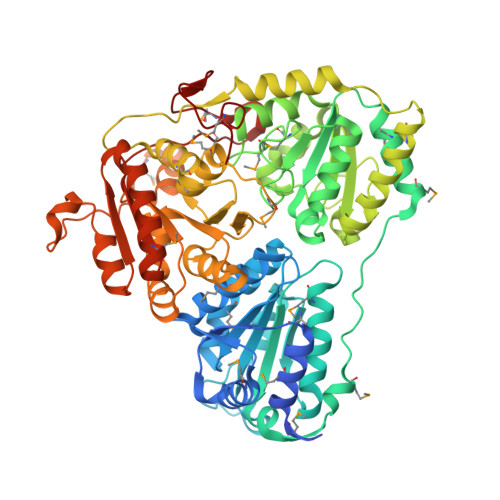Glyoxylate carboligase lacks the canonical active site glutamate of thiamine-dependent enzymes.
Kaplun, A., Binshtein, E., Vyazmensky, M., Steinmetz, A., Barak, Z., Chipman, D.M., Tittmann, K., Shaanan, B.(2008) Nat Chem Biol 4: 113-118
- PubMed: 18176558
- DOI: https://doi.org/10.1038/nchembio.62
- Primary Citation of Related Structures:
2PAN - PubMed Abstract:
Thiamine diphosphate (ThDP), a derivative of vitamin B1, is an enzymatic cofactor whose special chemical properties allow it to play critical mechanistic roles in a number of essential metabolic enzymes. It has been assumed that all ThDP-dependent enzymes exploit a polar interaction between a strictly conserved glutamate and the N1' of the ThDP moiety. The crystal structure of glyoxylate carboligase challenges this paradigm by revealing that valine replaces the conserved glutamate. Through kinetic, spectroscopic and site-directed mutagenesis studies, we show that although this extreme change lowers the rate of the initial step of the enzymatic reaction, it ensures efficient progress through subsequent steps. Glyoxylate carboligase thus provides a unique illustration of the fine tuning between catalytic stages imposed during evolution on enzymes catalyzing multistep processes.
- Department of Life Sciences, Ben-Gurion University of the Negev, 1 Ben-Gurion Avenue, Beer-Sheva 84105, Israel.
Organizational Affiliation:






















